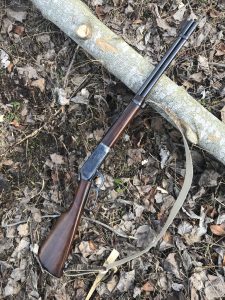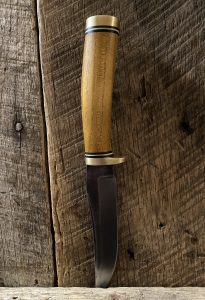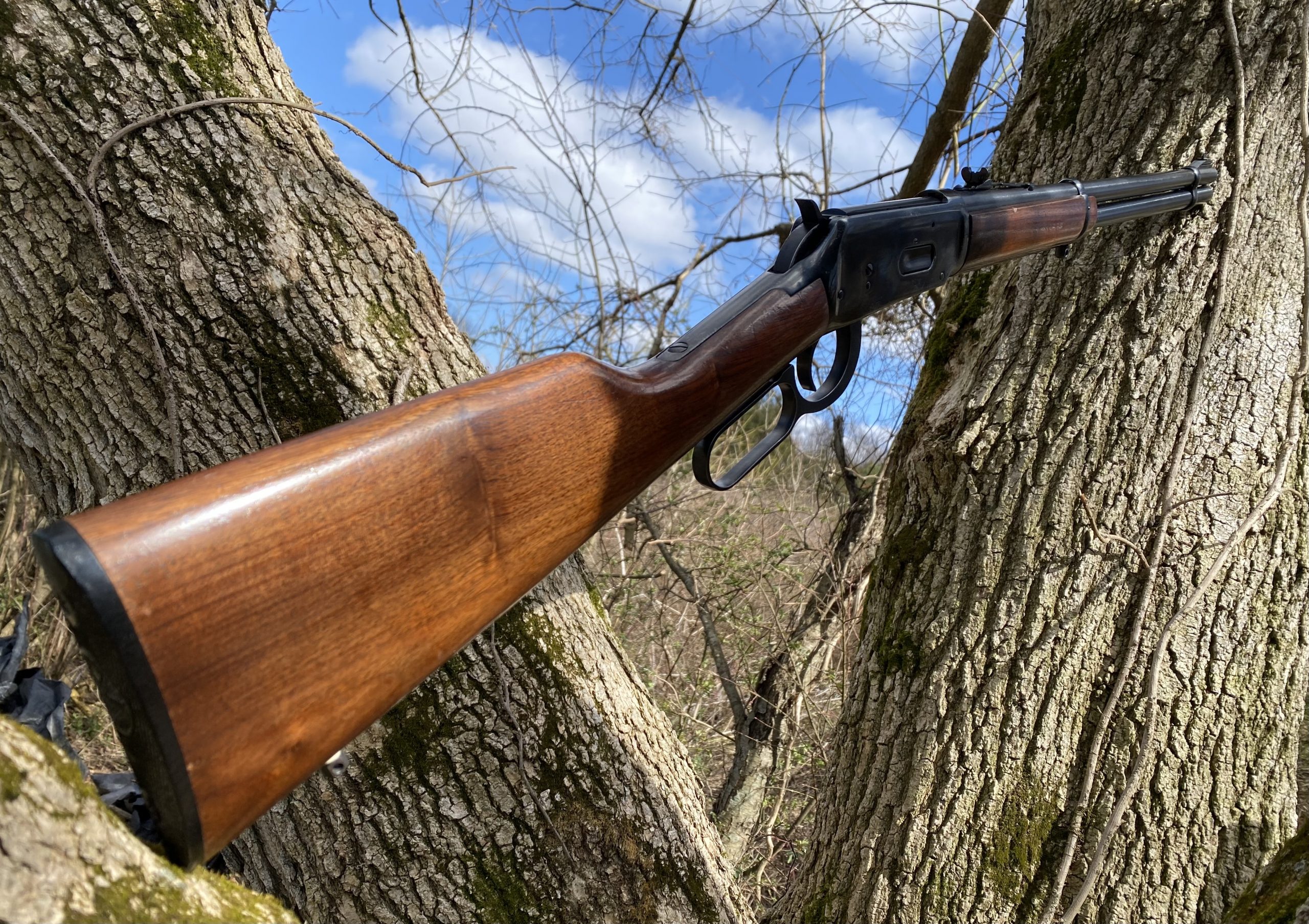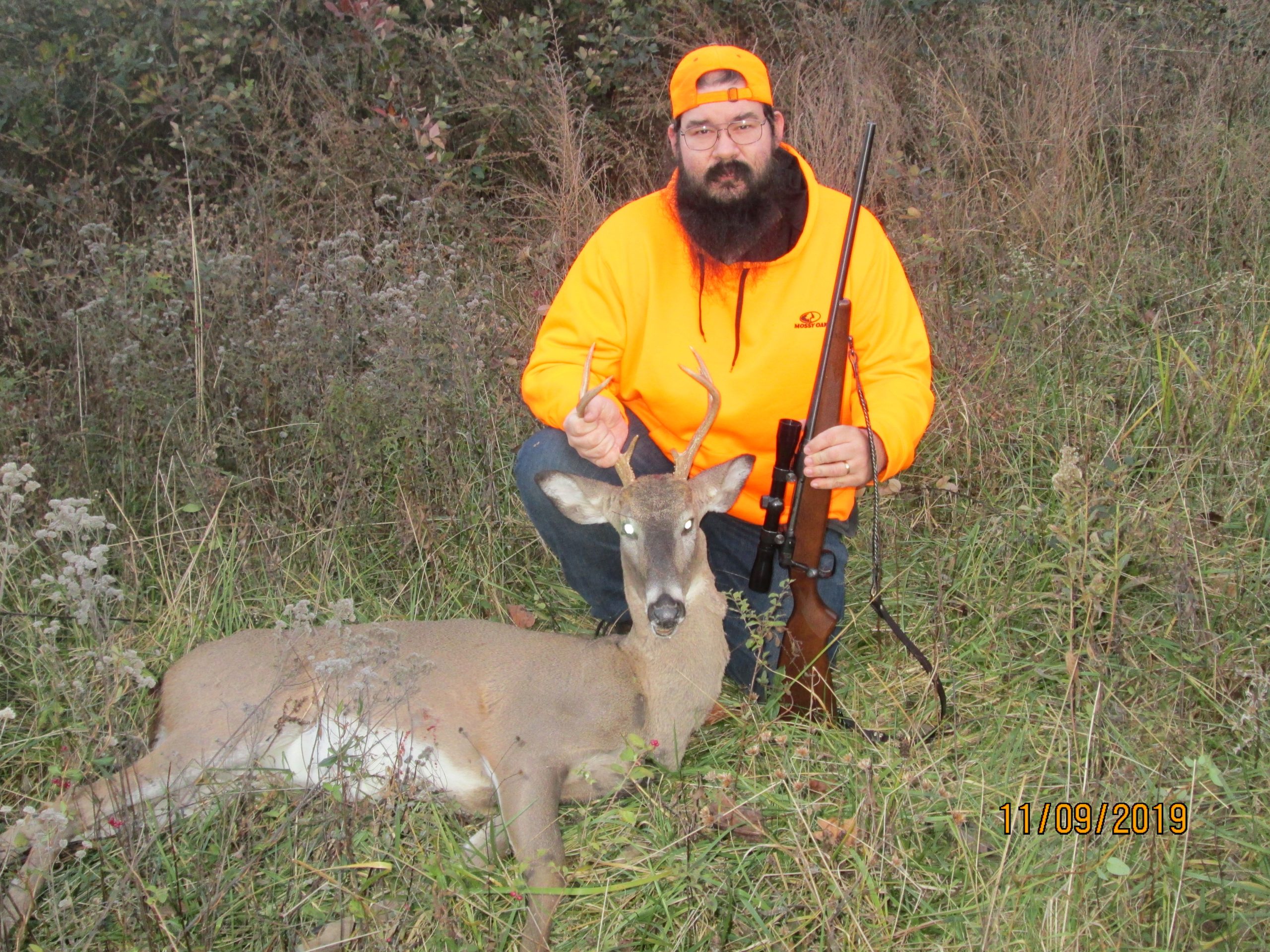Growing up in farm country, but not having anyone to initiate me into hunting, I was in my 30s before I took my first deer. I had drug my feet on hunting deer for quite some time. I had hunted some small game previously though, so I knew I liked hunting in general, but I never committed to bagging a deer.
That year, I hunted several days but didn’t see anything. Mostly I hunted in the afternoons, but the morning of the last day of modern gun I was up and decided to hunt early. Of course I know now that deer hunters get up before the sun even rolls over and thinks about it. But not having much to go on, I did (and often still do) things my own way.
It is really a simple story. I had been watching the deer around our house, like folks do. So I knew right were the deer trail was. I grabbed my rifle and headed out.

The rifle in this case is more properly called a carbine. A Winchester 94 chambered in the venerable 30-30. It doesn’t get much more proper for a deer rifle, especially in the short woods of the rolling hills of Kentucky. A Winchester 94, with its 20″ barrel is so light and handy, just under 7 pounds. And it has a lot of firepower in such an easily maneuvered package; 8 rounds total.
My gun wears the distinct badge of a poor receiver finish that is common of guns in that era. Before you go bashing post 64 Winchesters, you have to understand that this was the utility rifle of its time. It was every mans rifle, and it had to be manufactured to a price point. When Winchester switched from a milled receiver to an investment cast receiver, they didn’t perfect the bluing until several years later. That said, there is nothing mechanically unsound about my rifle, or any of the rifles from the post 64 era that I have either owned or inspected. Remember too, that investment cast guns are not only the norm now, but Weatherby, Ruger, and others have been using them to great success for years. Ruger really showed the gun world that you can make high quality guns using investment casting. That purple hue is one tell, but the result is superior strength at a reduced cost of manufacture.
Back to the story. I grabbed my Winchester and headed out that morning, and it didn’t take me long. I walked up to the barn, which is only about 100 yards from the house. I went to the right side and didn’t see anything, then back around to the left. There I spotted a band of 5 does. My heart skipped a beat. The does were about 20 yards away, moving single file up the trail. I calmly thumbed the hammer back to full cock as I raised the rifle to my shoulder. The does didn’t seem concerned, and one stopped and turned facing me, like an elephant right before it charges you and stomps you into the ground. I aimed at the breast, sorta low, envisioning where the heart and lungs were, and fired. The doe immediately turned and started up the trail, but she only went a few feet and laid down. She began making a sound that is similar to a moose call, a distress I guess. I moved the lever down and loaded another cartridge in, took aim at her head and fired. Click!? I had short stroked the action in my excitement. So I levered it again and this time was sure to get a round in the chamber. I aimed at her head and fired. I missed. I repeated this twice more and missed twice more. This caused the doe to get up, and when she stood, I hit her again in the chest. Almost exactly in the same spot. She moved up the trail only another 20 yards or so and went down.
All in all I used 5 shots, connecting with my first, and last. Was it the cleanest? Absolutely not! But it did suffice and resulted in a successful hunt. The first shot would have likely been enough but I wasn’t sure of where I had hit her. Upon investigation during skinning, I discovered that the bullets, both of them, had traveled nearly the same path, going in the chest, raking upwards and traveling along the spine, missing most of the entrails, and exiting the rump.
I was pretty excited from doe fever. It was quite a spiritual experience too, shooting a big animal like that, and I thanked both God and the deer. I went back to the house and got my knife, in this case a Buck 119. I didn’t have the wherewithal to have my intended knife on my person, but of course I had my pocket knife. I didn’t think to get the camera for pictures either unfortunately.
At best I did a hack job at field dressing. It wasn’t pretty. My only resource was Sam Fadala’s book, Game care and Cookery, which has black and white photos and a printed description of the process. It’s an awesome vintage book, but leaves some to be desired for the details I needed to know.
I digress, I learned some things that morning. First, a Buck 119 while doable, is a mite too large for field dressing. Second, having some water on hand to clean your hands is a must for field dressing, and handy for washing out the body cavity too. Third, blood is not slippery, rather, its sticky like maple syrup.
I dragged the doe from where she lay, to the barn, by means of a cord around her neck. I hung her up by that cord, with help from a few friends that stopped by on the way to church. I missed church that day with all that excitement.
 I commenced skinning the critter with the buck 119 but then I moved to a Schrade USA Uncle Henry 153 Golden spike. It was a better size for the task and more to my liking. I also butchered some of the meat with that knife. Don’t get me wrong though, a Buck 119 is a fine knife, but my personal preference is for a shorter length blade.
I commenced skinning the critter with the buck 119 but then I moved to a Schrade USA Uncle Henry 153 Golden spike. It was a better size for the task and more to my liking. I also butchered some of the meat with that knife. Don’t get me wrong though, a Buck 119 is a fine knife, but my personal preference is for a shorter length blade.
It was cool at that time of year, so I left the carcass to hang a couple days until I could figure out what to do. I called a friend, and he came over and helped me after work with butchering two days later. By the time he arrived, I had the legs off, but not broke down. We cut the legs up for roasts and stew meat. Some of the other parts for burger. Burger didn’t work so well with the crappy grinder I had. So that was out. Stew meat it was. A big bowl of trimmings went to the dogs. And they got all the bones and what little meat that was on the ribs. I had some good roasts and a few steaks and some fine stews and soups for a few months. I let my buddy have a good selection of the bounty too.
I learned a lot with what to do and not do on that first deer. It was an experience I’ll never forget. An experience to learn from. I do sincerely hope you’ve enjoyed my story, and learned something. Remember, we all have to start somewhere and this was mine.



